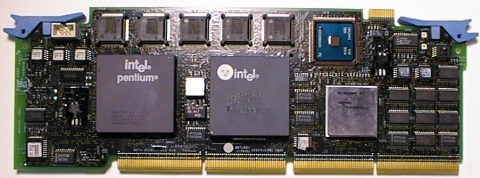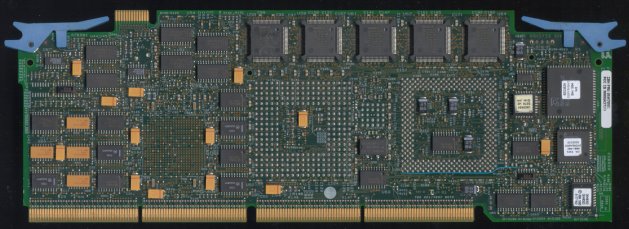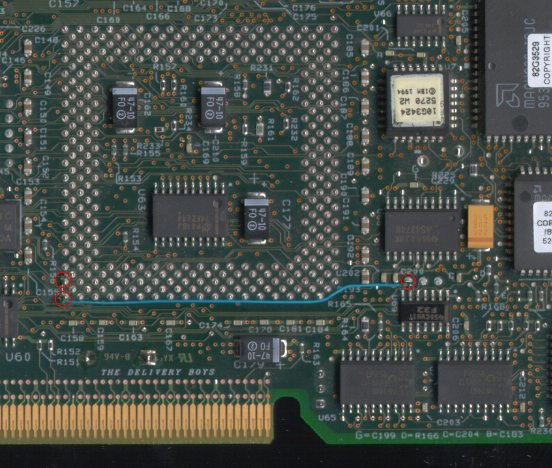THE SOLUTION
As with other Type-4 P90 complex mods, the conversion of the base-clock speed is optional. Whether
you chose to stick with the stock 60MHz oscillator or upgrade to a 66MHz unit is entirely up to you.
Here's how a stock P90 card looks without the heatsink:

Between the processor and the cache controller is the oscillator, which in this case has replaced by
a faster 66.667MHz unit:

(Note: I've used both the 66MHz and 66.667MHz oscillators successfully.
However, if you feel the need for maximum compatibility and stability,
the 66MHz unit as used on the type-4 P66 complex might be the better choice)
Once the oscillator is replaced, the complex operates at 66MHz, much like the Type-4 P66 complex.
The next thing that must be done to accomodate a Pentium 200MMX Overdrive is add some wiring which
routes a 5V power source to the appropriate pins on the socket to drive the built-in heatsink/fan
unit that exists on the Overdrive. This wiring is done on the back side of the complex, on the
lower-right section of the board.
The blue patch wiring I added is visible in this wide shot:

Here's a close-up view detailing the pins that need to be connected with the patch wire:

With the patch wiring in place, the socket is now theoretically "overdrive-capable", and the complex
is ready to accept a Pentium 200MMX Overdrive part.
Once the Overdrive is installed, the complex will look like this:

That's about it! The Pentium 200MMX Overdrive fits very nicely onto the complex, with the
end-result performance gain being very noticable. The only drawback is that there have been
some unexplained failures experienced under both NT and Windows that may or may not
be directly related to the modification. If you perform this mod, please update the
PS/2 newsgroup with your experiences.
Disclaimer: As with all other contents on this site describing modifications that may
boost the performance of your hardware, the author(s) are only describing methods that
are for the most part "experimental" in nature. Some of these modifications will void
your manufacturers' warrantee, and at worst may also permanently damage your hardware.
If you choose to perform any of these modifications, please do so understanding these
risks, as the author(s) cannot be held liable for any loss or damage that may result.
|